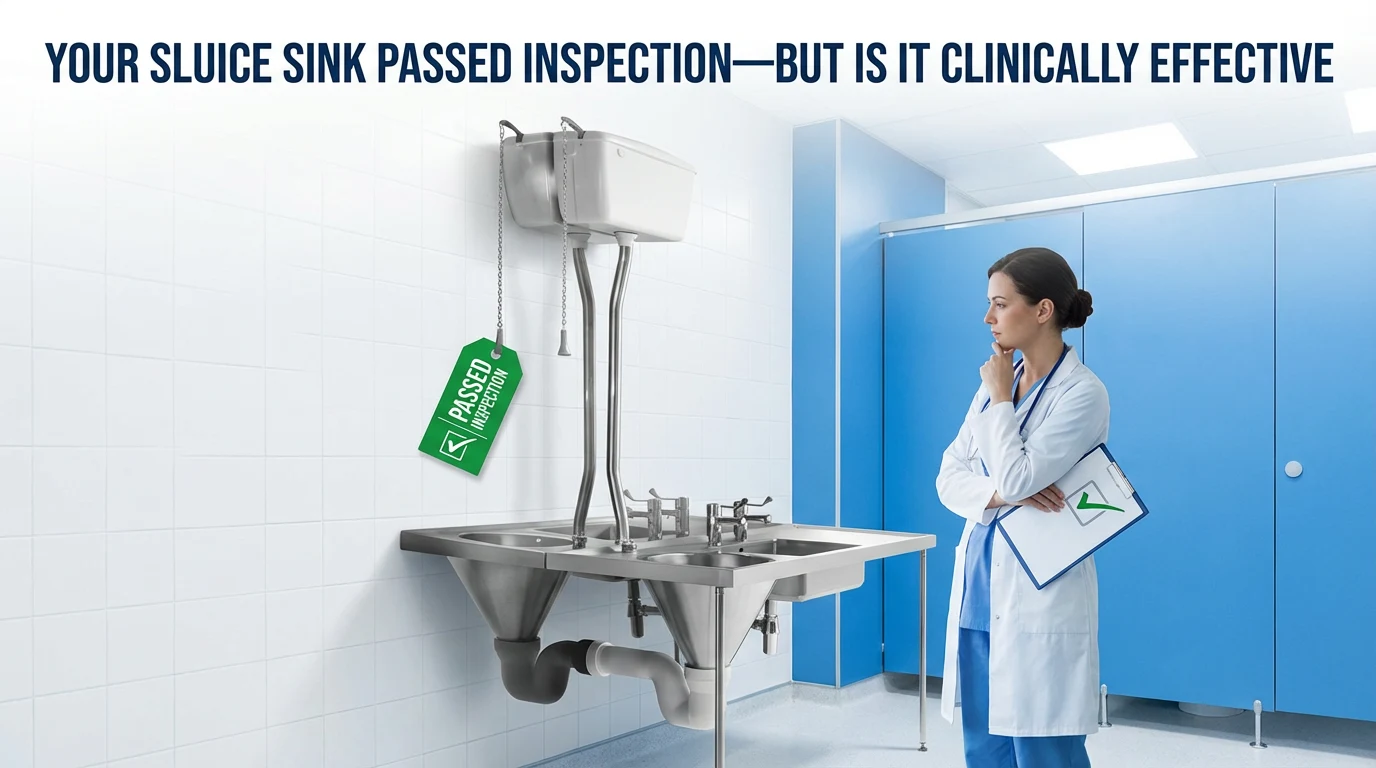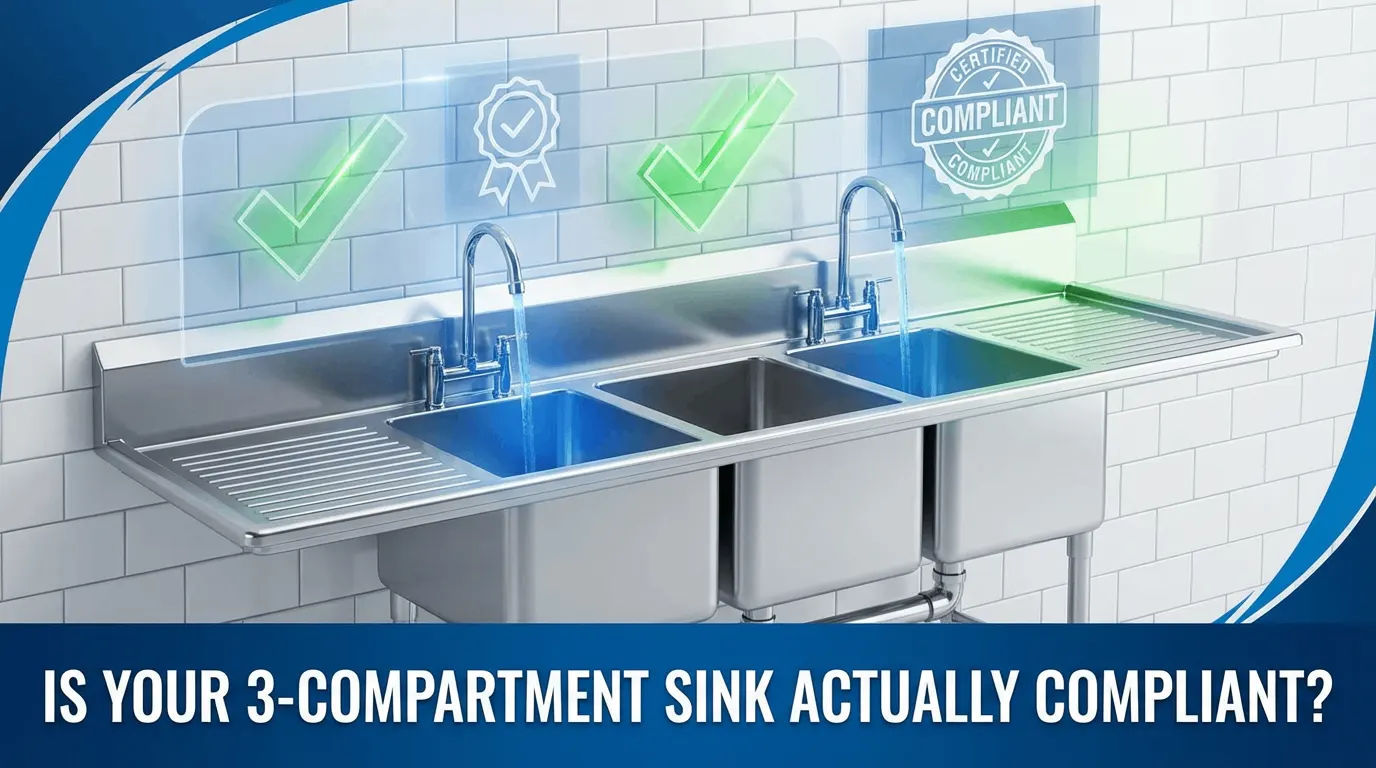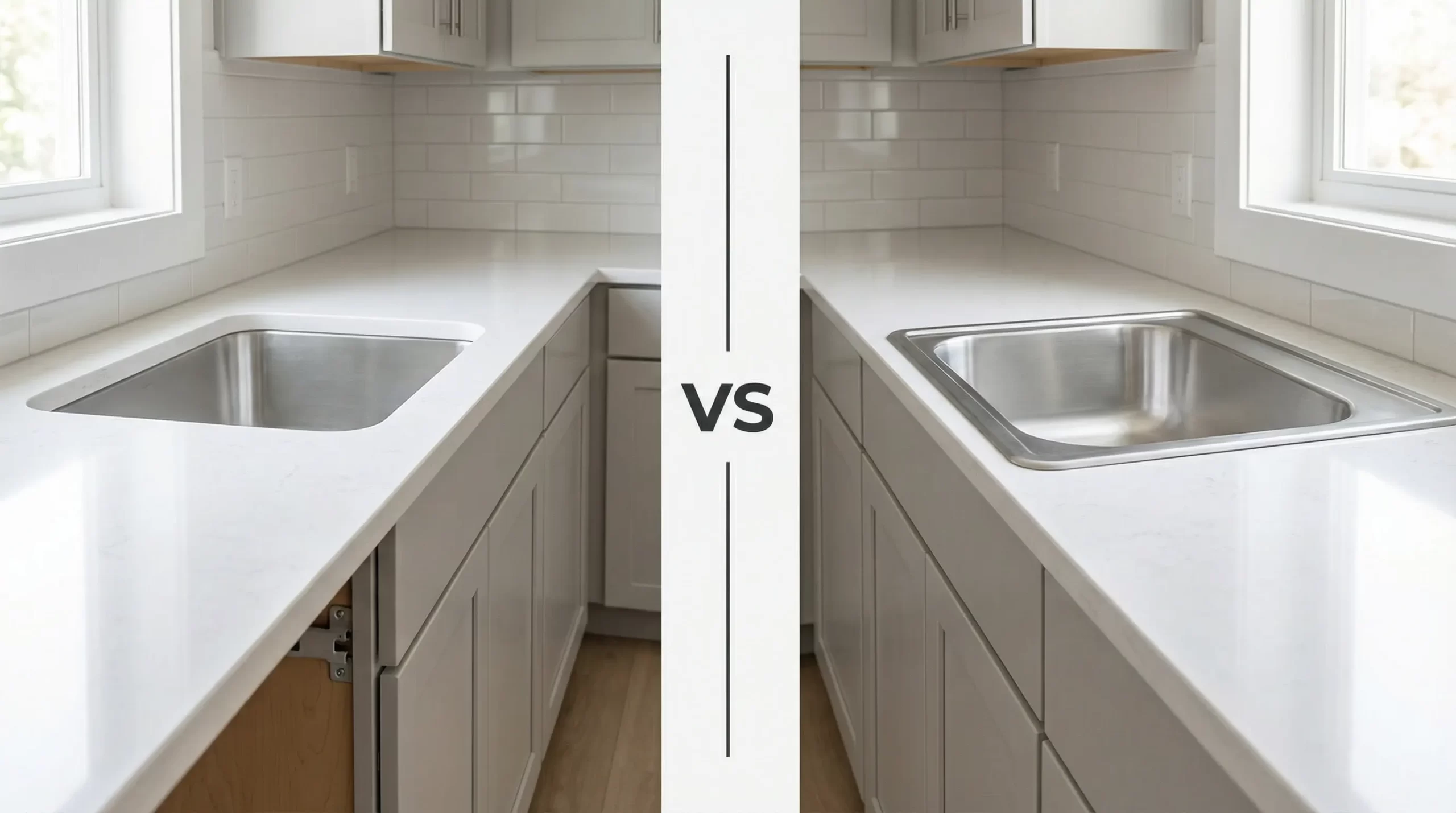Commercial Kitchen Sink: How to Choose the Right One
- Clarify purpose, volume, and space needs
- Pick the right size: single or three compartment sink, depth and width based on gear
- Go for 304 stainless steel, 16-18 gauge thick, brushed finish for durability
- Optimize rear drainage, add strainers and splash guards
- Ensure NSF certification, rounded corners for easy cleaning, meet local codes
- Drop-in or undermount setup, pro installation, regular upkeep
I. Clarify Your Needs
Define the Sink’s Purpose
Before you even start shopping for a commercial kitchen sink, you’ve got to pin down what it’s really for. This is the starting line that shapes everything else. First, let’s talk purpose—figure out what your kitchen sink is going to tackle. Is it washing veggies all day, scrubbing piles of dishes, or soaking those massive pots that barely fit anywhere? If it’s just basic stuff like rinsing greens, a medium-sized kitchen sink with quick drainage will do the trick, keeping things moving without slowing you down. But if you’re handling heavy-duty tasks—like soaking huge stockpots or tackling greasy baking trays—you’ll need something deeper, maybe even a commercial stainless steel sink or a three compartment sink to split up washing, rinsing, and sanitizing. Different jobs mean different needs, so getting this straight keeps you from picking the wrong one and saves you a headache.
Evaluate Daily Volume
Next up, think about how busy your kitchen gets every day—that’s your volume. If you’re running a chill little café where it’s just cups and spoons, a simple hand sink or a single laundry sink can handle it, small footprint and easy on the wallet. But if your kitchen’s a war zone with dishes stacking up during rush hour, you’re in a whole different game. High-volume jobs call for a bigger, sturdier sink—think commercial kitchen sink with multiple compartments to keep pace. Crunch the numbers on how much you’re washing daily, and you’ll know if you can go lightweight or need a beast that can take the heat.
Measure Your Space
Don’t skip measuring your space either—this isn’t something you can wing. Grab a tape measure and check where that stainless steel sink is going to live; you need length, width, and height so it doesn’t mess up your kitchen’s flow. Tight counter? A drop-in bar sink might be your lifesaver, functional without hogging space. Got a roomy layout? You could go for a mop sink or something with drainage wings to boost efficiency. A sink that doesn’t fit your setup is a disaster—too big and you’re cramped, too small and it’s useless. Measure it out, know your limits, and you’ll land on the right pick.
II. Pick the Right Size and Setup
Single vs. Multi-Compartment Sinks
Choosing a commercial kitchen sink means size and setup are the main event—you’ve got to think it through. Start with single versus multi-compartment options; it’s all about how your kitchen runs. If you’re constantly washing big stuff like oversized baking trays or stockpots, a single kitchen sink or laundry sink is your go-to—plenty of room to fit those monsters without turning it into a wrestling match. But if your kitchen’s about efficiency and splitting tasks—like washing, rinsing, and sanitizing in one smooth flow—then a multi-compartment setup shines, especially a three compartment sink or commercial stainless steel sink. Picture it: one side for washing, one for rinsing, one for sanitizing, all organized and no chaos—that’s the dream for a busy restaurant. Check your workflow and decide if single or multi is your vibe.
Match Depth to Tasks
Depth’s a big deal too, and it’s got to match your tasks. Need to soak stuff—like a pile of dishes or pots caked with sauce? A deep sink is your hero. At 8 to 12 inches, something like a mop sink or commercial kitchen sink holds plenty of water and cuts down on splashing, keeping your floor from turning into a puddle. But if you’re mostly doing quick cleanups, like washing small plates or a few spoons, a shallower 5-to-7-inch sink works fine—think hand sink or bar sink, light and easy to handle. Get the depth right, and it’s smooth sailing; too shallow and you’re dry, too deep and you’re splashing everywhere—annoying either way.
Ensure Proper Width and Length
Width and length need some love too—no half-measures here. Think about what you’re washing, especially the big gear. If your kitchen’s always dealing with large baking trays, that sink better be at least 22 inches wide, or you’re stuck cramming stuff in and cursing. A commercial stainless steel sink or three compartment sink usually nails this, especially with a little extra room to handle big pots with ease. Just washing small batches? A bar sink or compact stainless steel sink does the job without overkill. Match the size to your gear, or you’ll regret it when nothing fits.
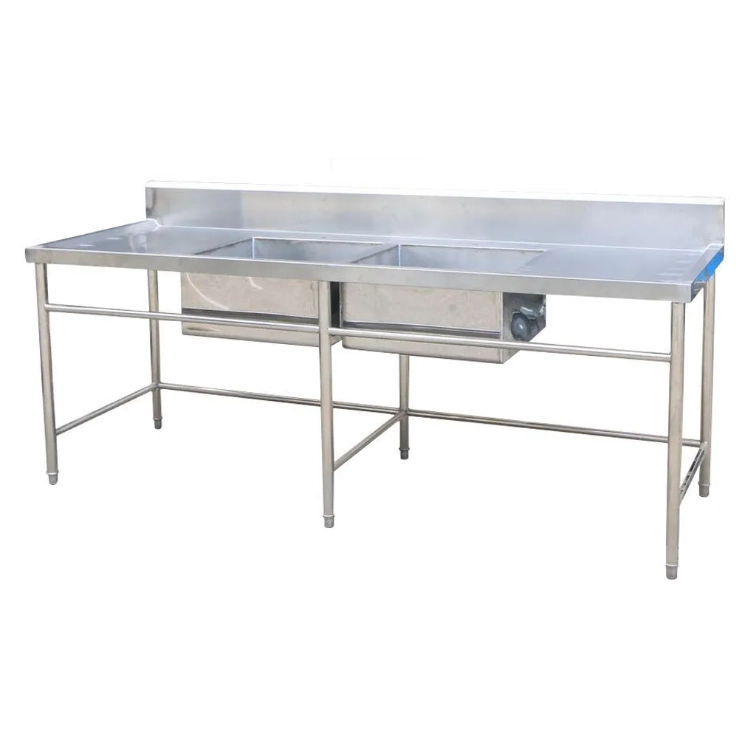
III. Material and Durability
Prioritize Stainless Steel
When picking a commercial kitchen sink, material and durability are where you dig in—it’s what decides if it lasts or flops. Stainless steel is the champ here, especially 304 grade with an 18/8 or 18/10 mix; it’s corrosion-proof and a breeze to clean, making it the gold standard for a kitchen sink. Whether it’s a commercial stainless steel sink or a three compartment sink, this stuff stands up to moisture and grease without breaking a sweat. Thickness matters too—aim for 16 to 18 gauge; the lower the number, the thicker it is. A stainless steel sink or mop sink built like that can take a beating without denting. In a busy kitchen with pots clanging around, a thin sink caves fast, and that’s no joke. So, 304 stainless with solid thickness is your rock-solid bet for a commercial kitchen sink.
Evaluate Alternative Materials
Other materials are out there, but weigh your options. Cast iron’s tough—think old-school kitchen sink or laundry sink—but it’s a beast to move and cracks if you drop something heavy. One slip, and you’re replacing it; no time for that in a commercial setup. Composite materials look slick with a smooth finish, perfect for a bar sink, but they can’t handle the grind. Use it as a commercial kitchen sink for big pots daily, and it’ll wear out or crack in no time. Cast iron and composites have their spots, but for commercial use, they don’t match stainless steel’s staying power.
Focus on Surface Finish
Surface finish counts too—don’t sleep on it. Brushed stainless steel is the way to go, like on a commercial stainless steel sink or stainless steel table. The texture hides scratches and doesn’t show dirt as much. Who’s got time to polish water spots in a hectic kitchen? Brushed wipes clean with a rag and looks sharp. Polished finishes shine like a mirror, but every fingerprint and smudge screams at you—tough to keep up with on a hand sink or three compartment sink that’s always in use. Brushed stainless keeps your commercial kitchen sink tough and good-looking longer, saving you grief.
IV. Drainage and Accessories
Prioritize Smart Drainage
For a commercial kitchen sink, drainage and accessories aren’t things to skimp on—they make or break how smooth it runs. Start with drainage design; you want something smart, like a rear or offset drain on a commercial stainless steel sink. This setup pushes the pipes back or to the side, freeing up storage underneath. A center drain, like on some old kitchen sink models, hogs the cabinet space—good luck stashing cleaners or spare pots without a fight. In spots like a laundry cabinet or commercial kitchen sink where space is gold, rear drainage keeps things tidy and practical. Check that drain placement, or you’re setting yourself up for a mess.
Enhance with Accessories
Accessories can level up your sink—think about what you need. A built-in strainer on a three compartment sink or mop sink catches food scraps and grease, keeping pipes from clogging so you’re not fishing out gunk daily. Splash guards are clutch too, especially for a high-use commercial kitchen sink—no more water everywhere, and your floor stays dry, cutting down on mopping. A side drainage board’s a win, like on a hand sink or bar sink; washed dishes drip right there, keeping your counter clean and your workflow tight. These aren’t must-haves, but they make life easier—pick what fits your kitchen’s gaps, and you’re golden.
Pair with the Right Faucet
Your faucet’s got to play nice with the sink, or it’s a waste. A commercial kitchen sink needs a workhorse—high-arc or pull-out faucets, like a water fountain style with flexibility. For big stuff like pots or trays, a short faucet won’t cut it; you’ll be soaked and swearing. High-arc hits the bottom hard, and pull-outs adjust to blast every corner. Pair that with a three compartment sink or stainless steel sink, and you’re washing faster than ever. Before you buy, make sure the sink can handle that faucet setup—don’t get stuck with a mismatch that kills your groove.
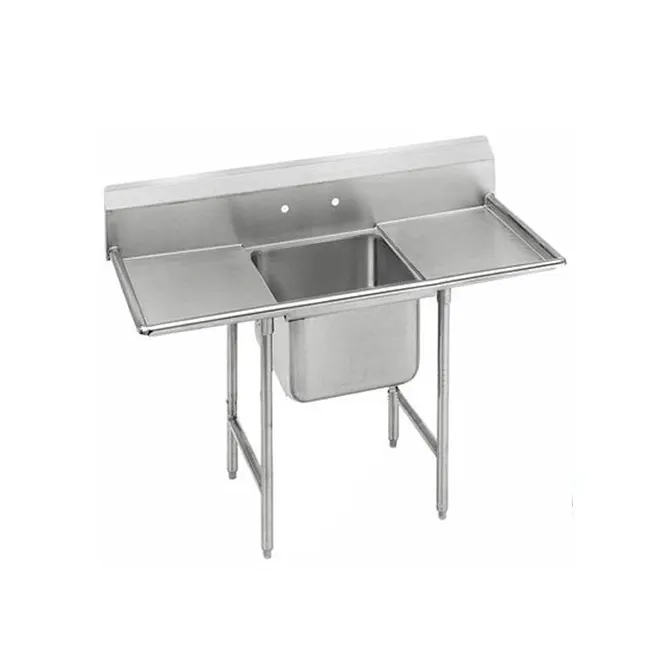
V. Meet Hygiene and Regulatory Standards
Prioritize NSF Certification
With a commercial kitchen sink, hygiene and regs are dead serious—mess this up, and you’re in hot water. NSF certification is non-negotiable, especially for a commercial kitchen sink or three compartment sink that touches food. The National Sanitation Foundation sets the bar for food safety, and you’ve got to pick a commercial stainless steel sink with that stamp. A hygiene slip—like bacteria gone wild—can mean fines or a trashed business. NSF is your green light; whether it’s a kitchen sink or hand sink, that label means it’s legit and safe. Check the box or manual before buying—don’t gamble with food safety.
Understand Local Requirements
Local codes are another hurdle, and they vary. Dig into your area’s rules—some demand a three compartment sink for washing, rinsing, and sanitizing, no shortcuts, especially in restaurants or processing spots. Others might spec out minimum sizes for a commercial kitchen sink or set heights for a water fountain. Drainage rules for a mop sink or stainless steel sink can get picky too. Skip this homework, and you’re installing blind—non-compliant means redo time and cash down the drain. Call your local health department or hit the web for the details; know the game before you play.
Focus on Easy Cleaning
Ease of cleaning’s a must—hygiene’s the backbone of any kitchen. Go for rounded corners on a commercial stainless steel sink or bar sink; smooth edges mean bacteria’s got nowhere to hide. Square corners on a sink get grimy fast—crud piles up in the cracks, and you can’t scrub it out, gross and risky. Rounded designs, like on a hand sink or mop sink, wipe down with one swipe, safe and simple. In a slammed commercial kitchen, who’s got time to dig out filth? A clean-friendly sink keeps germs at bay and your standards high.
VI. Budget and Brand Picks
Set a Realistic Budget
Choosing a commercial kitchen sink means crunching numbers and picking brands smart—cash isn’t free, and it’s got to last. Price depends on what you’re after. Entry-level single sinks, like a kitchen sink or laundry sink, run 200 to 500 bucks—great for small gigs or quiet kitchens, simple and wallet-friendly. Want a high-performance beast like a three compartment sink or commercial stainless steel sink? That’s 1000 bucks or more. It’s tough, built for big jobs—perfect for a restaurant drowning in dishes. Expensive has its perks, cheap has its place; weigh if you’re saving now or banking on years of use. Budget’s about balancing cost and longevity—don’t just chase low prices and get stuck with junk.
Choose Trusted Brands
A solid brand saves headaches. Take XinHe Sink—they nail commercial kitchen sink and stainless steel sink builds with quality that holds up, plus warranties and support. A leak or busted part? Good service fixes it fast. Off-brand stuff might be cheaper, but when it fails and nobody’s there to help, you’re sunk—literally, in a commercial kitchen where a dead sink kills your flow. Don’t skimp on support for high-use gear like a mop sink or bar sink; a trusted name pays off.
Consider Secondhand Options
Secondhand’s an option—saving cash is sweet. Used stainless steel sink or three compartment sink deals can tempt, especially on a tight budget; a good find slashes costs. But inspect like a hawk—surface is one thing, wear’s another. Check for cracks or rust; tap it, peek inside for dents. Hidden damage—like a crack that leaks in days—turns a bargain into a bust. Buy used if you’re picky like it’s a car; no issues, it’s a steal—otherwise, repairs eat your savings.
VII. Installation and Maintenance Tips
Match Installation to Your Space
Setting up a commercial kitchen sink calls for planning—install and upkeep right, or it’s trouble city. Installation type hinges on your space. Drop-in setups, like a kitchen sink or laundry sink, fit tight spots—slide it into the counter, seal the edge, space saved and neat. For easy cleaning, undermount commercial stainless steel sink or bar sink wins—under the counter, crumbs swipe right in, no edge fuss. Match it to your counter, like a laundry cabinet or stainless steel table; edges need to seal tight, or water seeps and rots the works. Scope your kitchen layout first, pick what fits, and you won’t kick yourself later.
Maintain for Longevity
Maintenance keeps your sink kicking. A commercial kitchen sink or three compartment sink lives in water—regular care’s a must. Mild cleaner does it—wipe a mop sink or hand sink with a damp cloth and gentle soap, clean in a flash, no harm done. Skip acids like vinegar or bleach; they pit a stainless steel sink ugly fast. Check drainage pipes too—commercial kitchens pile up scraps and grease; a clog’s a nightmare. Brush or snake it clear, keep water flowing, and your sink stays solid. A backup turns your kitchen into a lake—not funny.
Hire a Professional
Get a pro for install. A commercial kitchen sink or three compartment sink isn’t a DIY twist-and-done; a licensed plumber locks it in right and legal. Bad pipes leak, or drainage flunks code—health inspectors don’t play, and that’s a migraine. Pros handle tricky setups like a mop sink or flush sink too, no fumbling or redos. Don’t cheap out on labor—done right, it lasts, and leaks won’t crash your party.


